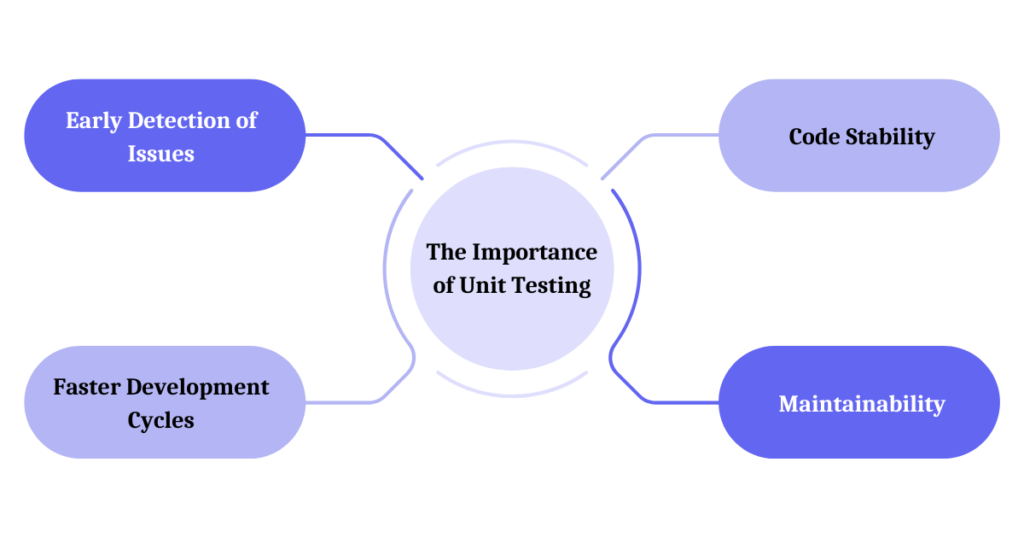Modern software development makes unit testing an essential process. Unit tests focus on verifying individual methods, functions or classes to make sure that they perform as expected.
As applications expand and evolve over time however, maintaining effective unit tests becomes ever more complex and challenging.
AI-driven feedback loops offer solutions. By continuously analyzing unit tests and offering actionable insights, they enable developers to build more robust tests, identify coverage gaps more easily and adapt more quickly when changes in codebase occur.
In this blog we discuss unit testing's importance, how AI enhances feedback loops and builds stronger testing frameworks.
The Importance of Unit Testing

Unit testing refers to the practice of verifying individual components within an application before integration with other parts. Unit testing plays an integral part of quality assurance because:
- Early Detection of Issues: Unit tests catch bugs early in the development process, making them easier and cheaper to fix.
- Code Stability: Regularly running unit tests ensures that small code changes don’t negatively impact the overall functionality, reducing the likelihood of regressions.
- Faster Development Cycles: By automating the verification of individual components, unit tests help speed up the development process, allowing developers to release code faster and with confidence.
- Maintainability: Unit tests make the code more maintainable by ensuring that changes to one part of the system do not affect unrelated parts.
While unit testing provides many advantages, it also has limitations. For instance, creating comprehensive unit tests takes time and it is easy to miss certain edge cases; AI could enhance testing through feedback loops which identify gaps and suggest continuous improvements.
AI-Driven Feedback Loops in Unit Tests
Employing AI-driven feedback loops within unit testing processes can dramatically enhance effectiveness by continuously assessing test quality, identifying gaps and suggesting solutions.
1. Analyzing Existing Unit Tests for Coverage Gaps
Artificial intelligence plays an essential part in improving unit tests by helping identify areas lacking appropriate coverage.
AI tools can examine both codebases and results to detect gaps that lack enough test coverage - so AI tools are invaluable resources in pinpointing coverage deficiencies in unit tests.
- Untested Code: AI can highlight functions, methods, or classes that have no corresponding unit tests, ensuring that every part of the code is covered.
- Edge Case Detection: AI can detect if current tests miss edge cases or boundary conditions, which are often the most prone to bugs.
- Redundant Tests: By evaluating the effectiveness of existing unit tests, AI can identify and eliminate redundant tests that do not provide additional value.
2. Generating Suggestions Based on Code Changes
AI can also offer suggestions for new unit tests in response to recent modifications made in code by developers, like modifications or addons of functionality that require testing.
AI systems quickly assess whether existing unit tests need updating due to these alterations before proposing replacement tests where applicable.
- Code Change Analysis: By analyzing new commits or updates to the codebase, AI tools can automatically identify areas that require additional unit tests. This ensures that even the smallest code changes are thoroughly tested.
- Test Recommendations: Based on the analysis, AI systems can recommend specific test scenarios or test cases that cover new features or modifications.
These recommendations not only help fill coverage gaps but also ensure that tests are always up to date with the evolving codebase.
3. Automated Test Optimization
AI systems not only identify missing tests but can also optimize existing ones by altering their structure and execution - including:
- Refactoring Test Code: AI tools can refactor outdated or inefficient test code to align with best practices and improve performance.
- Test Efficiency: AI-driven systems can reduce test execution time by streamlining tests and eliminating unnecessary or redundant steps. This results in faster feedback loops for developers.
AI can transform testing frameworks to become leaner and more effective, saving both resources and time while offering comprehensive unit tests coverage.
4. Continuous Learning and Adaptation
Artificial intelligence feedback loops constantly learn from past test results and adapt their suggestions in response to shifting project requirements.
With each additional test run and analysis conducted by AI feedback loops, its understanding of codebase grows steadily over time allowing it to:
- Enhance Test Suggestions: Over time, AI tools have proven themselves capable of offering more precise and relevant recommendations for new test cases based on historical data analysis and past test outcomes.
- Evolve with Your Codebase: AI-powered systems adapt to changes in the codebase, making sure test suggestions and optimization strategies remain relevant as projects change over time.
Continuous learning ensures unit tests always reflect the state of an application and increase their efficacy over time.
Book a Demo and experience ContextQA testing tool in action with a complimentary, no-obligation session tailored to your business needs.
Conclusion: Strengthen Your Testing Framework with AI Feedback
Unit testing is an integral element of software development, serving as the cornerstone to creating reliable, maintainable applications with high-quality performance.
Unfortunately, however, creating and maintaining effective unit tests can become time-consuming over time, particularly as code bases mature and change. AI feedback offers one potential way forward; building a stronger unit test framework with it would strengthen it considerably.
AI-powered feedback loops offer an answer to these challenges by automating the analysis and improvement of unit tests.
By monitoring codebase changes and continuously detecting coverage gaps or suggesting new tests, AI helps ensure unit tests stay comprehensively updated as code changes occur.
In addition, this tool optimizes existing tests making them more efficient while decreasing overall testing burden.
Integrating AI into unit testing not only strengthens its framework but also increases software development lifecycle effectiveness by offering actionable insights that increase code quality while decreasing time-to-market.
Teams using AI-driven feedback loops can focus on what matters most - creating high-quality software that meets user expectations - while leaving tedious testing tasks to intelligent systems which constantly learn and adjust according to each project's demands.
Also Read - Exploratory Testing: Enhancing Creativity in Quality Assurance
We make it easy to get started with the ContextQA tool: Start Free Trial.
